|
Athens Tour
Athens Sites & Photo Gallery
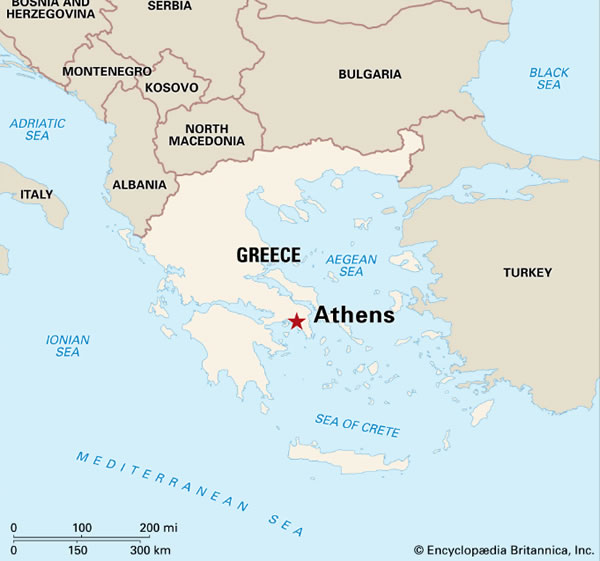
Athens, Greece
Welcome to the birthplace of democracy, arts, science and
philosophy of western civilisation. Home of Plato, Socrates,
Pericles, Euripides, Sophocles, Aeschylus. Athens is one of
the world's oldest cities. It's recorded history spanning
around 3.400 years and it is being inhabited since the 11th
millennium B.C.E.
Athens is the capital of Greece. It was also at the heart
of Ancient Greece, a powerful civilization and empire. The
city is still dominated by 5th-century BC landmarks, including
the Acropolis, a hilltop citadel topped with
ancient buildings like the colonnaded Parthenon
temple. The Acropolis Museum, along with the National Archaeological
Museum, preserves sculptures, vases, jewelry and more from
Ancient Greece.
|
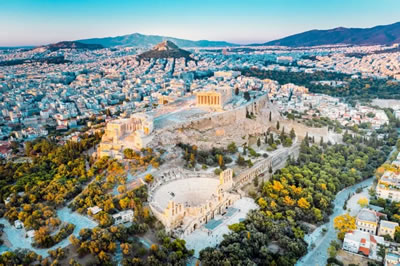 |
Acropolis & Parthenon
The Acropolis of Athens and its monuments are universal symbols
of the classical spirit and civilization and form the greatest
architectural and artistic complex bequeathed by Greek Antiquity
to the world. In the second half of the fifth century bc,
Athens, following the victory against the Persians and the
establishment of democracy, took a leading position amongst
the other city-states of the ancient world. In the age that
followed, as thought and art flourished, an exceptional group
of artists put into effect the ambitious plans of Athenian
statesman Pericles and, under the inspired guidance of the
sculptor Pheidias, transformed the rocky hill into a unique
monument of thought and the arts. The most important monuments
were built during that time: the Parthenon, built by Ictinus,
the Erechtheon, the Propylaea, the monumental entrance to
the Acropolis, designed by Mnesicles and the small temple
Athena Nike.
|
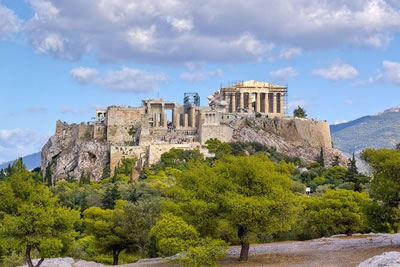 |
Panathenaic Stadium
The Panathenaic Stadium dates back to the 4th century B.C.
and was the site of the first modern Olympic games in 1896
and remains the starting point of the Olympic flame torch
relay. Made entirely of white marble, it's an impressive sight
that's earned it the nickname Kallimarmaro or "beautiful
marble". There are even a couple of hours in the morning
designated for morning jogs when you run in the footsteps
of former Olympians. Take a stroll up to Ardittos Hill for
a panoramic view of the stadium.
|
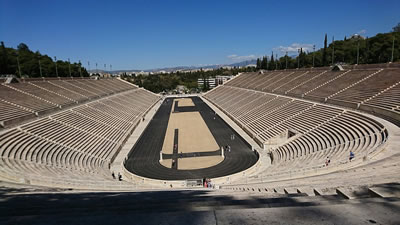 |
Hadrian's Arch
The Arch of Hadrian in Athens, also known as Hadrian's Arch,
is a remarkable triumphal monument that has played a significant
role in the historical narrative of both Roman and Greek cultures.
Built in 132 AD, this arch stands as a testament to the reign
of Roman Emperor Hadrian, who held a profound fascination
with Greek culture and philosophy.
| 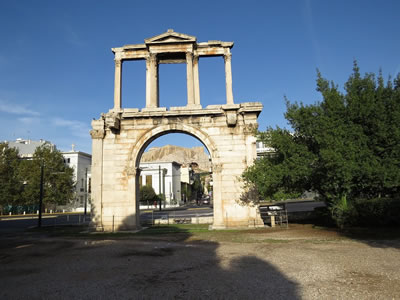 |
Syntagna Square
Situated in the center of Athens, Syntagma Square is not
only located in the heart of Greece’s capital, it is also
an important historical public area.
Syntagma Square is also known as Constitution Square, as
it is where the Athenians rose up against King Otto of Greece
on 3 September 1843 to demand a constitution.
Iconic landmarks
The square is presided over by the Hellenic Parliament, an
imposing building erected between 1836 and 1842 as the Royal
Palace for the first king of Greece, King Otto.
In front of the Parliament building is the Tomb of the Unknown
Soldier, watched over day and night by the “Evzones”, two
Presidential Guards dressed in a curious traditional uniform.
On one of the sides of Syntagma Square is the grandiose Hotel
Grande Bretagne. This 5-star hotel was built in 1842 and transformed
into a hotel in 1874. Celebrities usually stay in this historic
landmark.
At the top of Syntagma Square is Ermou Street, one of the
city’s main shopping streets. It is usually one of the liveliest
arteries in Athens. |
 |
|



